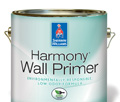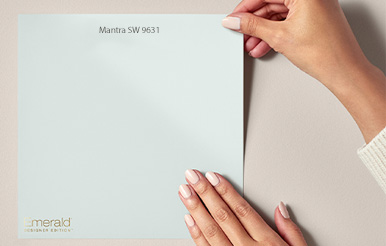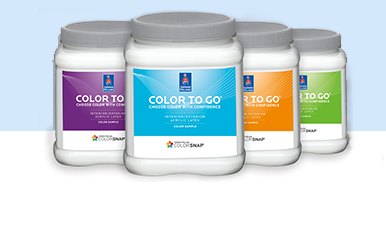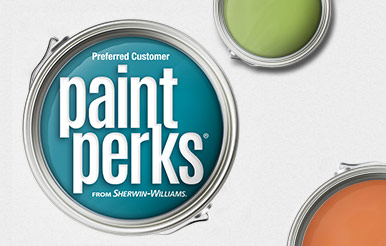Preparation. It's the key to good-looking, long-lasting results. A properly prepared surface is clean, solid and dry.
Don't paint immediately after rain (or if rain is predicted), during foggy weather or when the temperature is below 50 degrees Fahrenheit (unless you're using products specifically designed for these conditions).
Warning! Removal of old paint by sanding, scraping or other means may generate dust or fumes that contain lead. Exposure to lead dust or fumes may cause brain damage or other adverse health effects, especially in children or pregnant women. Controlling exposure to lead or other hazardous substances requires the use of proper protective equipment, such as a properly fitted respirator (NIOSH approved) and proper containment and cleanup. For more information, call (in the U.S.) the National Lead Information Center at 1-800-424-LEAD or contact your local health authority.
Testing
Before you paint your entire house, it's a good idea to test the paint you plan to use. Prepare, prime (if necessary) and paint an inconspicuous spot. Wait the appropriate drying time as specified on the label, then look for any adhesion or compatibility problems before proceeding with a full-scale application.
Remove all surface contamination by washing with an appropriate cleaner, rinse thoroughly and allow to dry. Scrape and sand peeled or checked paint to a sound surface. Sand glossy surfaces dull. Seal stains (such as water, smoke, ink, pencil or grease stains) with ProBlock® Primer Sealer.
Not Previously Painted or Exposed to Original Surface
Surfaces that have not been previously painted or that are exposed down to the original surface should be handled as follows:
Wood, Plywood, Composition Board
Sand any exposed wood to a fresh surface.
Patch all holes and imperfections with a wood filler or putty and sand smooth.
All patched areas must be primed.
Masonry, Concrete, Cement, Block
All new surfaces must be cured according to the supplier's recommendations - usually about 30 days.
Remove all form release and curing agents.
Rough surfaces can be filled to provide a smooth surface.
If painting cannot wait 30 days, allow the surface to cure 7 days and prime the surface.
Cracks, voids, and other holes should be repaired with ConSeal™ Patch or ConSeal™ Sealant.
Aluminum And Galvanized Steel
Wash to remove any oil, grease or other surface contamination.
All corrosion must be removed with sandpaper, steel wool or other abrading method.
Steel
Rust and mill scale must be removed using sandpaper, steel wool or other abrading method.
Bare steel must be primed the same day as cleaned.
Vinyl Siding
Clean the surface thoroughly by scrubbing with warm, soapy water.
Rinse thoroughly.
Do not paint vinyl siding with any color darker than the original color.
Painting with darker colors may cause the siding to warp.

See Also
Surface Preparation Video
Watch and learn helpful tips on preparing to paint your exterior.

Sherwin-Williams Primers
Explore our range of primers designed to meet the challenges of specific surfaces.
View Exterior Primers
View Interior Primers














